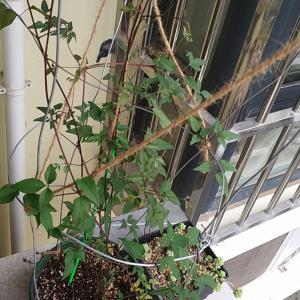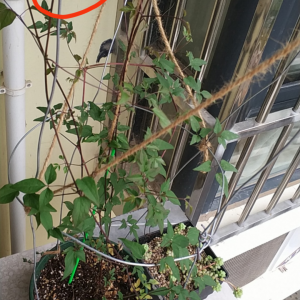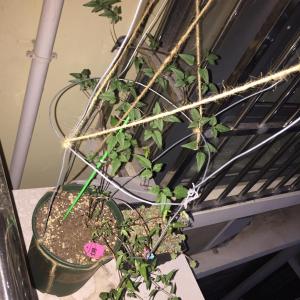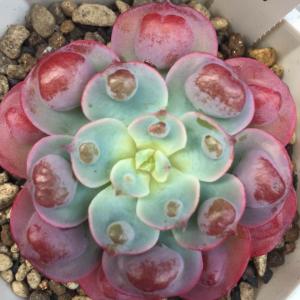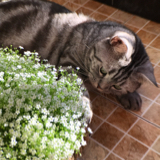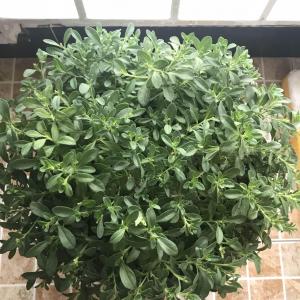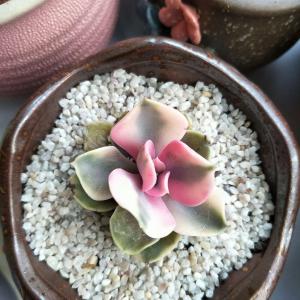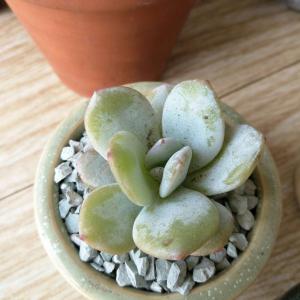文章
Miss Chen
2018年03月29日

Description: This perennial plant is 1½–3' tall and largely unbranched, except for several flowering stems toward the apex. The stems are covered with long white hairs. The alternate compound leaves are trifoliate. Each compound leaf has a short hairy petiole with a pair of narrow stipules about 1/10" (2.5 mm.) long at its base. The individual leaflets are up to 2" long and 1½" across. They are oval, oval-orbiculate, or obovate, and have smooth margins. Their upper surface is finely pubescent, while their lower surface is softly hairy. The upper stems terminate in rather short spike-like racemes of flowers about 1-3" long. The hairy flowering stalks (peduncles) are often longer than either the leaflets or the inflorescence. The spike-like racemes have whorls of flowers that are densely crowded together. Each flower is about 1/3" (8 mm.) long and cream-colored, usually with a purple spot at the base. It has a typical pea-like flower structure, consisting of a standard and keel. The calyx lobes are longer than the flowers. They are hairy, narrow, and taper to a sharp point, turning brown with maturity. This species of bush clover rarely produces cleistogamous flowers. The blooming period occurs during the late summer and lasts about 3 weeks. There is no noticeable floral scent. Each flower is replaced by a seedpod that is short, flat-sided, and pubescent, with its outer tip consisting of a short beak. This seedpod is about the same length or shorter than the calyx lobes. The root system consists of a taproot. This plant spreads by reseeding itself.
Cultivation: The preference is partial sun, mesic to dry conditions, and an acid soil containing sand or rocky material. Full sunlight or light shade, and more fertile soil are also tolerated. Hairy Bush Clover fixes nitrogen in the soil.
Range & Habitat: This species has an odd bifurcated distribution, occurring in NE and southern Illinois, but hardly anywhere else in the state (see Distribution Map). Hairy Bush Clover is an occasional plant in these areas, where it is native. Habitats include upland oak woodland that are rocky or sandy, oak savannas that are rocky or sandy, and sandstone glades. In NE Illinois, this species occurs in sandy areas that are dominated by Black Oaks, while in southern Illinois it occurs in areas that are hilly and rocky. Occasional wildfires are probably beneficial to this species as this opens up the forest canopy.
Faunal Associations: The flowers attract bees primarily, including bumblebees, Leaf-Cutting bees, and Halictid bees. The short-tongued bee Calliopsis andreniformis often visits the flowers of Lespedeza spp. Butterflies may visit the flowers for nectar, but they are non-pollinating. The foliage is eaten by the caterpillars of various skippers and moths. This includes such skipper species as Thorybes pylades (Northern Cloudywing), Thorybes bathyllus (Southern Cloudywing), and Epargyreus clarus (Silver-Spotted Skipper), and such moth species as Utetheisa bella (Bella Moth), Ptichodis herbarum (Common Ptichodis), and Dasylopha anguina (Black-Spotted Prominent). The seeds are eaten by the Bobwhite Quail and Wild Turkey, while the foliage is eaten by the Cottontail Rabbit and White-Tailed Deer. The foliage is non-toxic and highly palatable to mammalian herbivores.

Photographic Location: The photos were taken at a sandy savanna and a sandy path of the Hooper Branch Savanna Nature Preserve in Iroquois County, Illinois. The dominant tree in this area is Quercus velutina (Black Oak).
Comments: Hairy Bush Clover is one of several Lespedeza spp. that occur in Oak woodlands or savannas. This species is not very showy as the small flowers are partially hidden by the long calyx lobes. It can be distinguished from these other species by its cream-colored flowers, unusually broad leaves, and very hairy stems. A distinguishing characteristic are the long peduncles, which are often longer than the leaflets and spike-like racemes. This can be readily observed in the photographs. Other bush clovers, such as Lespedeza capitata (Round-Headed Bush Clover), usually have shorter peduncles.
Cultivation: The preference is partial sun, mesic to dry conditions, and an acid soil containing sand or rocky material. Full sunlight or light shade, and more fertile soil are also tolerated. Hairy Bush Clover fixes nitrogen in the soil.
Range & Habitat: This species has an odd bifurcated distribution, occurring in NE and southern Illinois, but hardly anywhere else in the state (see Distribution Map). Hairy Bush Clover is an occasional plant in these areas, where it is native. Habitats include upland oak woodland that are rocky or sandy, oak savannas that are rocky or sandy, and sandstone glades. In NE Illinois, this species occurs in sandy areas that are dominated by Black Oaks, while in southern Illinois it occurs in areas that are hilly and rocky. Occasional wildfires are probably beneficial to this species as this opens up the forest canopy.
Faunal Associations: The flowers attract bees primarily, including bumblebees, Leaf-Cutting bees, and Halictid bees. The short-tongued bee Calliopsis andreniformis often visits the flowers of Lespedeza spp. Butterflies may visit the flowers for nectar, but they are non-pollinating. The foliage is eaten by the caterpillars of various skippers and moths. This includes such skipper species as Thorybes pylades (Northern Cloudywing), Thorybes bathyllus (Southern Cloudywing), and Epargyreus clarus (Silver-Spotted Skipper), and such moth species as Utetheisa bella (Bella Moth), Ptichodis herbarum (Common Ptichodis), and Dasylopha anguina (Black-Spotted Prominent). The seeds are eaten by the Bobwhite Quail and Wild Turkey, while the foliage is eaten by the Cottontail Rabbit and White-Tailed Deer. The foliage is non-toxic and highly palatable to mammalian herbivores.

Photographic Location: The photos were taken at a sandy savanna and a sandy path of the Hooper Branch Savanna Nature Preserve in Iroquois County, Illinois. The dominant tree in this area is Quercus velutina (Black Oak).
Comments: Hairy Bush Clover is one of several Lespedeza spp. that occur in Oak woodlands or savannas. This species is not very showy as the small flowers are partially hidden by the long calyx lobes. It can be distinguished from these other species by its cream-colored flowers, unusually broad leaves, and very hairy stems. A distinguishing characteristic are the long peduncles, which are often longer than the leaflets and spike-like racemes. This can be readily observed in the photographs. Other bush clovers, such as Lespedeza capitata (Round-Headed Bush Clover), usually have shorter peduncles.
0
0
文章
木木
2018年03月28日

有花友问白银寿有哪些品种,说实话编辑真不能全部说出来,不过编辑找到了白银系的26个品种图,都是一些有代表性的品种,供花友们欣赏。
1、白银SP
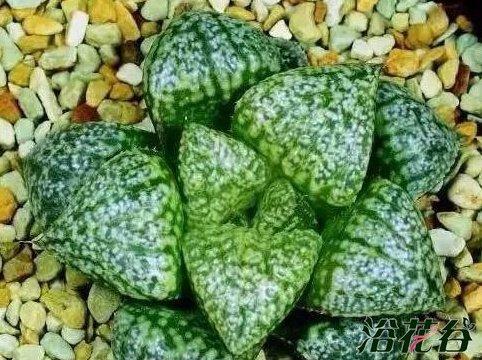
2、白银潘多拉锦

3、白银青木丸叶
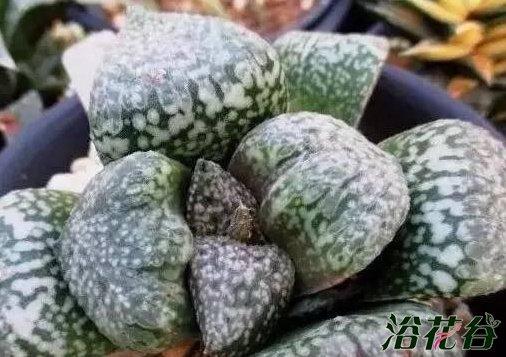
4、白银麦当娜
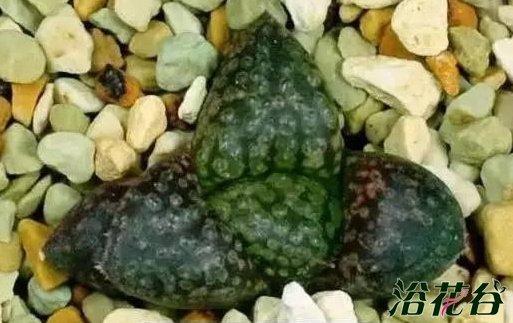
5、白银皇家
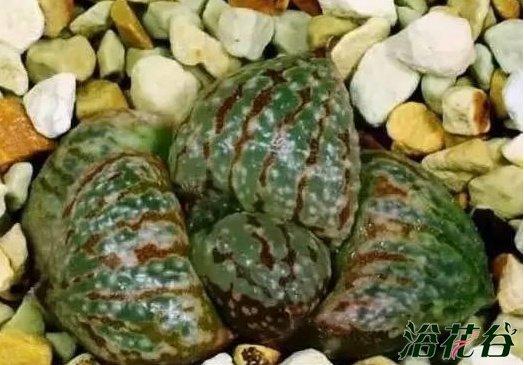
6、白银海萤
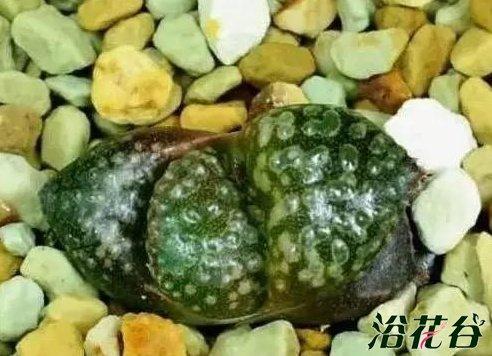
7、白银海皇
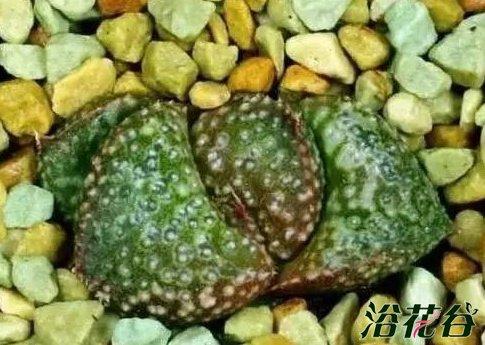
8、白银白拍子
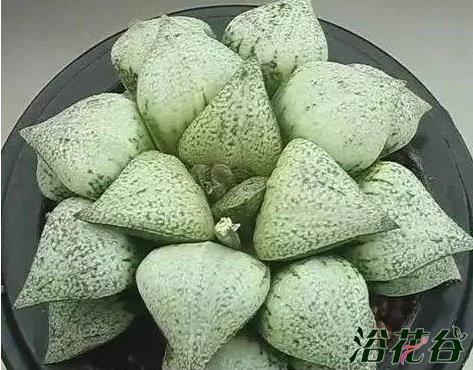
9、白银白雪姬

10、白银白鹰
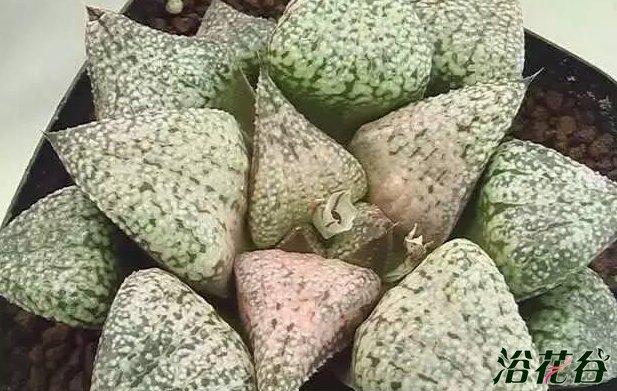
11、白银大白莲

12、白银福绿
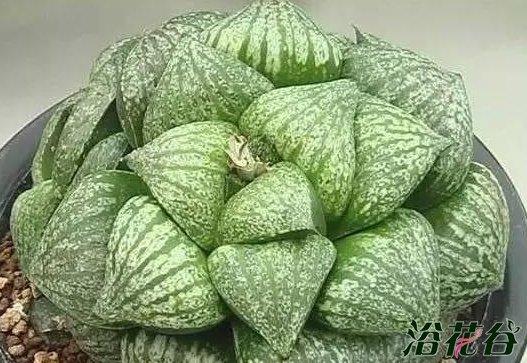
13、白银极乐殿
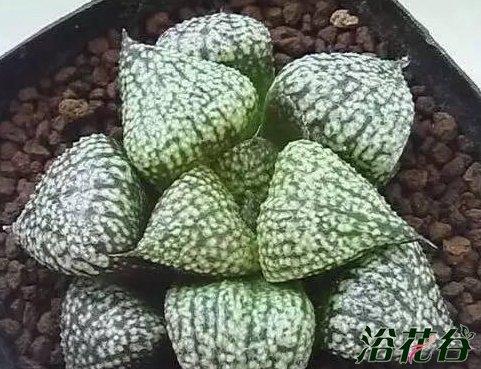
1、白银SP

2、白银潘多拉锦

3、白银青木丸叶

4、白银麦当娜

5、白银皇家

6、白银海萤

7、白银海皇

8、白银白拍子

9、白银白雪姬

10、白银白鹰

11、白银大白莲

12、白银福绿

13、白银极乐殿

0
0
文章
张祥明
2018年03月28日


一.缘由
1如果要解决这种植物不开花,那么首先要找出来到底是什么缘由导致它不开花。它的成长地阳光不够充足。
2它的成长扎根的土不能符合它的习性提供它所需要的养分。
3没有可供它攀爬的架子。
4水肥不够。
5没有给它做好保暖的措施。

二.解决方法
1因为这种植物好光,喜欢朝向太阳的环境,所以一定要安排一个能够没有太多遮挡,能够让它好好的享受太阳的地方种植。
2种植的土一定要符合它的要求,因为它喜欢肥沃的、湿润的、酸性的土,而且土最好是含有有机质,排水性要非常好,如果泥土的酸碱度不对,那么我们可以在浇灌的水中人为地加入硫酸亚铁补充植株成长的要求,少加点就行。
3因为这种植物是一种攀援的藤本的植物,会长出卷须,而且它必须要有物体来借助它攀爬成长。无论是为了美观需要还是为了种植需要,我们都可以给它搭一个架子,或者说搭一个棚,让它可以自由地攀爬汲取光照。

4因为这种植物的成长速度非常快,它孕育的花蕾又多,花期又非常地长,如果水分和肥料不够充足的话,就不能够结出一串串硕大的花苞,所以在它的成长期要每个月都给它施一次肥料,最好是在网上购买或者是从花农处购买一些腐熟稀薄的豆饼混水浇在种植植株的土层上面。还要保持泥土的一定的湿润,淋水的次数可以观察土层的湿润情况。在夏天除了要按时淋水,对于枝叶还要保持每天2到3次的喷水,同时向地面洒水以提高空气的湿度。在花朵孕育的时候最好能够补充一次氮肥。
5这种植物非常不能够抵抗寒冷,所以在北方的冬天要把它移植到屋子里面过冬,还要接触阳光,这个时候要控制淋水的量,不要施肥,室内的温度要保持在10度以上。
0
0
文章
Miss Chen
2018年03月27日

Description: This perennial herbaceous wildflower is 1-3' tall and semi-erect to erect in habit. Its stems are light green to purplish brown, angular or terete, glabrous, and sometimes glaucous. Alternate compound leaves occur along these stems at intervals; they are widely spreading to ascending and evenly pinnate. Each compound leaf consists of 4-10 pairs of leaflets along a rachis (central stalk) that is light green to purplish brown and glabrous. The tip of each compound leaf terminates in a branched tendril that can cling to adjacent vegetation, fences, and other objects.

Individual leaflets are 1-2" long and ½-1¼" across; they are oval-ovate in shape, smooth along their margins, and glabrous. The upper leaflet surface is medium green, while the lower surface is pale green. Each leaflet has a short narrow petiole at its base that connects to the rachis of the compound leaf. Where each compound leaf joins the stem, there is a pair of leafy stipules about ½-1" in length. Each stipule is half-cordate in shape, forming a rounded basal lobe, where there are 1-3 small secondary lobes with blunt tips. Narrow racemes of 5-12 flowers (about 2½-5" in length) are borne on long naked peduncles that are shorter than the compound leaves. Individual flowers are ½-¾" long, consisting of 5 white or cream-colored petals, a light green to nearly white tubular calyx with 5 teeth, several hidden stamens, and a pistil with a single style. Each flower has aDistribution Map typical pea-like floral structure, where one upper petal forms the banner (or standard), 2 lateral petals form the wings, and 2 petals form the keel that is enclosed by the wings. The pedicels of the flowers are short and narrow. The blooming period occurs from late spring to mid-summer. Each flower is replaced by a 2-valved seedpod that becomes 2-3" long at maturity. Each seedpod is cylindrical, somewhat flattened, and glabrous, tapering at its tip into a curved beak. When they are fully mature, the seedpods divide into 2 parts to release their seeds. The root system is fibrous and rhizomatous.
Cultivation: The preference is partial sun, moist to dry conditions, sandy or rocky soil with some organic matter, and relatively cool temperatures during the summer.
Range & Habitat: Pale Vetchling is native to Illinois, where it is uncommon and state-listed as 'threatened.' It is found primarily in northern Illinois, although there are a few isolated populations in the southern part of the state. This wildflower is more common in areas lying north of the state. Habitats include upland woodlands, upland savannas, sandy bluffs, wooded slopes, the slopes of rocky ravines, and riverbanks. In Illinois, Pale Vetchling often occurs where oak trees are dominant.
Faunal Associations: The flowers are pollinated by bumblebees and other long-tongued bees, where they seek nectar and pollen. The caterpillars of the butterfly Glaucopsyche lygdamus (Silvery Blue) sometimes feed on vetchlings (Lathyrus spp.), although they are more often found on Vetches (Vicia spp.); this insect has a boreal range that is similar to Pale Vetchling. An aphid, Nearctaphis crataegifoliae, and other aphids may feed on this plant as well. The Ruffed Grouse sometimes eats the seeds and foliage of vetchlings.
Photographic Location: A woodland in NE Illinois. The photograph was taken by Tobin Fraley (Copyright © 2010).
Comments: Pale Vetchling is one of several Lathyrus spp. (vetchlings) in Illinois. Sometimes it is referred to as 'Cream Pea' or 'Cream Peavine.' This species can be distinguished from others in this genus by its white or cream-colored flowers, relatively broad leaflets, and distinctive stipules, which have rounded basal lobes with one or more secondary lobes. Other species in this genus often have purple-lavender flowers, narrow leaflets (less than one-third as wide as long), and their stipules lack secondary lobes. Pale Vetchling would probably be adaptable to cultivation in partially shaded gardens.

Individual leaflets are 1-2" long and ½-1¼" across; they are oval-ovate in shape, smooth along their margins, and glabrous. The upper leaflet surface is medium green, while the lower surface is pale green. Each leaflet has a short narrow petiole at its base that connects to the rachis of the compound leaf. Where each compound leaf joins the stem, there is a pair of leafy stipules about ½-1" in length. Each stipule is half-cordate in shape, forming a rounded basal lobe, where there are 1-3 small secondary lobes with blunt tips. Narrow racemes of 5-12 flowers (about 2½-5" in length) are borne on long naked peduncles that are shorter than the compound leaves. Individual flowers are ½-¾" long, consisting of 5 white or cream-colored petals, a light green to nearly white tubular calyx with 5 teeth, several hidden stamens, and a pistil with a single style. Each flower has aDistribution Map typical pea-like floral structure, where one upper petal forms the banner (or standard), 2 lateral petals form the wings, and 2 petals form the keel that is enclosed by the wings. The pedicels of the flowers are short and narrow. The blooming period occurs from late spring to mid-summer. Each flower is replaced by a 2-valved seedpod that becomes 2-3" long at maturity. Each seedpod is cylindrical, somewhat flattened, and glabrous, tapering at its tip into a curved beak. When they are fully mature, the seedpods divide into 2 parts to release their seeds. The root system is fibrous and rhizomatous.
Cultivation: The preference is partial sun, moist to dry conditions, sandy or rocky soil with some organic matter, and relatively cool temperatures during the summer.
Range & Habitat: Pale Vetchling is native to Illinois, where it is uncommon and state-listed as 'threatened.' It is found primarily in northern Illinois, although there are a few isolated populations in the southern part of the state. This wildflower is more common in areas lying north of the state. Habitats include upland woodlands, upland savannas, sandy bluffs, wooded slopes, the slopes of rocky ravines, and riverbanks. In Illinois, Pale Vetchling often occurs where oak trees are dominant.
Faunal Associations: The flowers are pollinated by bumblebees and other long-tongued bees, where they seek nectar and pollen. The caterpillars of the butterfly Glaucopsyche lygdamus (Silvery Blue) sometimes feed on vetchlings (Lathyrus spp.), although they are more often found on Vetches (Vicia spp.); this insect has a boreal range that is similar to Pale Vetchling. An aphid, Nearctaphis crataegifoliae, and other aphids may feed on this plant as well. The Ruffed Grouse sometimes eats the seeds and foliage of vetchlings.
Photographic Location: A woodland in NE Illinois. The photograph was taken by Tobin Fraley (Copyright © 2010).
Comments: Pale Vetchling is one of several Lathyrus spp. (vetchlings) in Illinois. Sometimes it is referred to as 'Cream Pea' or 'Cream Peavine.' This species can be distinguished from others in this genus by its white or cream-colored flowers, relatively broad leaflets, and distinctive stipules, which have rounded basal lobes with one or more secondary lobes. Other species in this genus often have purple-lavender flowers, narrow leaflets (less than one-third as wide as long), and their stipules lack secondary lobes. Pale Vetchling would probably be adaptable to cultivation in partially shaded gardens.
0
0
文章
Miss Chen
2018年03月27日

Description: This perennial wildflower is 1-3½' tall, producing a leafy central stem that is unbranched and more or less erect. The central stem is light green and more or less covered with spreading hairs; some hairs along the upper section of this stem may be glandular, otherwise they are non-glandular. Several alternate leaves occur along the lower three-fourths of this stem, becoming gradually smaller in size and more widely spaced as they ascend toward the inflorescence. The leaf blades are 2-6" long and ½-2" across, lanceolate-oblanceolate to ovate-obovate with smooth to nearly smooth margins. Some larger leaves may have widely spaced dentate teeth that are poorly defined. The upper surface of the leaf blades is medium green and hairy, while the lower surface is pale green and hairy. Each leaf tapers gradually into a petiole-like base and its tip is relatively blunt. Both the central stem and leaves contain a milky latex.

The central stem terminates in an elongated panicle of flowerheads up to 1' long and ½' across. Individual flowerheads are ½-¾" across, consisting of 30-60 yellow ray florets and no disk florets. Around the base of each flowerhead, 12-20 floral bracts (phyllaries) are arranged in a single series. Individual floral bracts are light green, linear in shape, and often glandular-hairy. The branches of the inflorescence are light green to dull purple and glandular-hairy; there are often a small leafy bracts (less than 1" in length) where these branches divide. The glandular hairs along the branches of the inflorescence and the floral bracts of the flowerheads are often black. The blooming period occurs from late summer to early fall for about 3-4 weeks. The florets are self-fertile in the absence of cross-pollination. The florets are replaced by achenes with tufts of tawny hair. Individual mature achenes are about 1/8" (3 mm.) long, narrowly cylindrical in shape, truncate at the apex, and dark brown. The root system is fibrous and rhizomatous; older plants may have a short underground caudex. Small colonies of plants are formed occasionally by the spreading rhizomes. A small rosette of basal leaves may be present during the winter after the flowering stalk with alternate leaves dies down.
Stem & LeavesCultivation: The preference is full sun to light shade, mesic to dry-mesic conditions, and soil containing loam, sand, or rocky material. The size of individual plants and the abundance of their flowerheads is highly variable.
Range & Habitat: The native Rough Hawkweed is occasional in most areas of Illinois (see Distribution Map). Habitats include rocky upland woodlands, bluffs, wooded slopes, woodland openings, savannas and sandy savannas, partially shaded ledges, woodland borders, and sandy roadsides. This wildflower benefits from occasional disturbance to reduce competition from woody vines, shrubs, and trees.
Faunal Associations: Surprisingly little information is available for hawkweeds (Hieracium spp.) about their floral-faunal relationships. The flowerheads are probably cross-pollinated by long-tongued bees and other insects; both nectar and pollen are available as floral rewards to such visitors. Hawkweeds are suspected host plants for the caterpillars of Schinia bina (Bina Flower Moth). The seeds or leaves are occasionally eaten by the Wild Turkey and Ruffed Grouse, while the foliage is browsed sparingly by the Cottontail Rabbit and White-Tailed Deer (Martin et al., 1951/1961). However, the bitter white latex and hairiness of the foliage does not make this species a preferred source of food for such animals.
Photographic Location: A deciduous woodland near an artificial lake at a state park in east-central Illinois.
Comments: This is one of several native hawkweeds (Hieracium spp.) in Illinois that have unbranched leafy stems and yellow flowerheads. Generally, they prefer semi-shaded wooded areas that are sandy or rocky, although Rough Hawkweed also occurs in woodlands with fertile loam. It is very similar in appearance to Hieracium gronovii (Gronovius' Hawkweed), but the latter species has spindle-shaped achenes with tapered upper tips (rather than truncate upper tips), relatively fewer florets per flowerhead (about 20-40), and leaves that are located toward the base of its central stem. Another similar species, Hieracium canadense (Canada Hawkweed), has larger flowerheads (¾-1¼" across) with more florets per flowerhead (40-100), inflorescence branches that are short-pubescent (rather than glandular-hairy), and more leaves along each central stem (often 12 or more). There are some hawkweeds that have been introduced from Europe, but their leaves are arranged in basal rosettes during the blooming period, unlike the native hawkweed species.

The central stem terminates in an elongated panicle of flowerheads up to 1' long and ½' across. Individual flowerheads are ½-¾" across, consisting of 30-60 yellow ray florets and no disk florets. Around the base of each flowerhead, 12-20 floral bracts (phyllaries) are arranged in a single series. Individual floral bracts are light green, linear in shape, and often glandular-hairy. The branches of the inflorescence are light green to dull purple and glandular-hairy; there are often a small leafy bracts (less than 1" in length) where these branches divide. The glandular hairs along the branches of the inflorescence and the floral bracts of the flowerheads are often black. The blooming period occurs from late summer to early fall for about 3-4 weeks. The florets are self-fertile in the absence of cross-pollination. The florets are replaced by achenes with tufts of tawny hair. Individual mature achenes are about 1/8" (3 mm.) long, narrowly cylindrical in shape, truncate at the apex, and dark brown. The root system is fibrous and rhizomatous; older plants may have a short underground caudex. Small colonies of plants are formed occasionally by the spreading rhizomes. A small rosette of basal leaves may be present during the winter after the flowering stalk with alternate leaves dies down.
Stem & LeavesCultivation: The preference is full sun to light shade, mesic to dry-mesic conditions, and soil containing loam, sand, or rocky material. The size of individual plants and the abundance of their flowerheads is highly variable.
Range & Habitat: The native Rough Hawkweed is occasional in most areas of Illinois (see Distribution Map). Habitats include rocky upland woodlands, bluffs, wooded slopes, woodland openings, savannas and sandy savannas, partially shaded ledges, woodland borders, and sandy roadsides. This wildflower benefits from occasional disturbance to reduce competition from woody vines, shrubs, and trees.
Faunal Associations: Surprisingly little information is available for hawkweeds (Hieracium spp.) about their floral-faunal relationships. The flowerheads are probably cross-pollinated by long-tongued bees and other insects; both nectar and pollen are available as floral rewards to such visitors. Hawkweeds are suspected host plants for the caterpillars of Schinia bina (Bina Flower Moth). The seeds or leaves are occasionally eaten by the Wild Turkey and Ruffed Grouse, while the foliage is browsed sparingly by the Cottontail Rabbit and White-Tailed Deer (Martin et al., 1951/1961). However, the bitter white latex and hairiness of the foliage does not make this species a preferred source of food for such animals.
Photographic Location: A deciduous woodland near an artificial lake at a state park in east-central Illinois.
Comments: This is one of several native hawkweeds (Hieracium spp.) in Illinois that have unbranched leafy stems and yellow flowerheads. Generally, they prefer semi-shaded wooded areas that are sandy or rocky, although Rough Hawkweed also occurs in woodlands with fertile loam. It is very similar in appearance to Hieracium gronovii (Gronovius' Hawkweed), but the latter species has spindle-shaped achenes with tapered upper tips (rather than truncate upper tips), relatively fewer florets per flowerhead (about 20-40), and leaves that are located toward the base of its central stem. Another similar species, Hieracium canadense (Canada Hawkweed), has larger flowerheads (¾-1¼" across) with more florets per flowerhead (40-100), inflorescence branches that are short-pubescent (rather than glandular-hairy), and more leaves along each central stem (often 12 or more). There are some hawkweeds that have been introduced from Europe, but their leaves are arranged in basal rosettes during the blooming period, unlike the native hawkweed species.
0
0
文章
Miss Chen
2018年03月27日

Description: This perennial herbaceous wildflower is 3–6½' tall, sending up one or more erect leafy stems from its root system. The stems are light green, faded light yellow, or faded light brown; they are terete, stiffly short-pubescent, and sparingly branched above. Most of the leaves are located along the lower half of the primary stems, where they are opposite. Smaller alternate leaves occur sparingly along the upper primary and secondary stems. All of these stems are erect to ascending. The lower to middle leaves are up to 6" long and 5" across; they are broadly oblong to oval-ovate in shape with margins that are slightly serrated to doubly serrated. To a limited extent, the leaf margins are also horizontally undulate. The leaves abruptly contract to narrowly winged petioles up to 2" long. These petioles have short stiff hairs. The leaf blades are medium green or yellowish green above, and light green below. The upper blade surface is sparsely covered with minute stiff hairs, providing it with a rough texture. The lower blade surface has short stiff hairs along the primary veins and a sparse covering of minute stiff hairs between the veins. The leaves have a prominent central vein and two prominent lateral veins; the latter curve toward the leaf tips.

The upper stems terminate in either solitary flowerheads or small loose clusters of 2-3 flowerheads on long naked peduncles up to 1' long. These flowerheads tend to occur at different heights from the ground. The peduncles are similar to the stems, except they are a little more narrow in diameter. The flowerheads are held erect or at an angle facing partly upward; they span about 2-3" across. Each flowerhead has 10-20 ray florets and a central disk of numerous disk florets. The widely spreading petaloid rays are bright yellow and oblong in shape. The corollas of the disk florets are about 6 mm. (¼") long, tubular in shape with 5 upper lobes, and dark red above. The divided styles of the disk florets are bright yellow, while their tubular anthers are dark red. The ray florets are sterile, while the disk florets are perfect. Surrounding the base of each flowerhead, there are floral bracts (phyllaries) in 3 series; these bracts differ in size and they are appressed together. Individual floral bracts are light green and broadly oblong in shape; their tips are obtusely pointed or rounded. The margins of these bracts are toothless and ciliate; their outer surfaces between the margins are sparsely short-pubescent.
The blooming period occurs during early autumn, lasting about 3-4 weeks. Afterwards, fertile disk florets are replaced achenes about 4 mm. in length. These achenes are oblong-obovate, somewhat flattened, brown, and short-pubescent primarily toward their apices. Each achene has a pair of lanceolate scales about 2 mm. long at its apex. However, these scales are early-deciduous. Because the seeds are dispersed primarily by gravity, they usually do not travel far from the mother plant. The root system consists of a crown of fibrous roots and short rhizomes. Clonal offsets are produced sparingly from the short rhizomes.
Cultivation: This plant prefers full or partial sun and mesic to dry-mesic conditions; it adapts to different soil types, including those that contain sand, loam, clay, and rocky material. It is easy to cultivate this plant in gardens and it remains more or less erect, rather than flopping over. Because of its short rhizomes, it is a less aggressive spreader than some sunflower species.

Range & Habitat: Silphium Sunflower has been found in only 2 counties of southern Illinois (Alexander and St. Clair counties), where it is native and rare (see Distribution Map). It may be extirpated from Alexander county, but several populations of this plant still persist in St. Clair county. Illinois lies along the northern range-limit of this species. Silphium Sunflower is endemic to south-central and central United States, where it is found primarily in Arkansas, Missouri, and Tennessee. Habitats include sand prairies, upland prairies and glades, upland savannas, openings in rocky woodlands, low sandy ground along streams, roadsides, and fallow fields. This sunflower is found in both high quality natural areas and disturbed sites. In wooded habitats, it benefits from occasional wildfires. Destruction of habitat by development and invasion of exotic species are the primary threats to this rare plant in Illinois (Molano-Flores, 2004).

Faunal Association: While little is known about floral-faunal relationships for this particular sunflower species, considerable information is available about other sunflower species and sunflowers in general. Similar species of sunflowers attract such flower-visiting insects as bumblebees, long-horned bees (Melissodes spp.), leaf-cutter bees (Megachile spp.), Halictid bees (Agapostemon spp., Lasioglossum spp.), Andrenid bees (Andrena spp.), dagger bees (Heterosarus spp.), plasterer bees (Colletes spp.), cuckoo bees (Epeolus spp., Triepeolus spp.), miscellaneous wasps, Syrphid flies (Eristalis spp., Toxomerus spp.), bee flies (Exoprosopa spp.), miscellaneous butterflies, and miscellaneous skippers (Robertson, 1929, and others). Some bees are specialist pollinators (oligoleges) of sunflowers; they include Melissodes agilis, Dufourea marginata, Andrena accepta, Andrena aliciae, Andrena helianthi, and Pseudopanurgus rugosus. Other insects feed destructively on the leaves, stems, roots, seeds, and florets of sunflowers. These species include weevils, long-horned beetles, leaf beetles, billbugs, seed weevils, larvae of leaf-miner flies, larvae of gall midges, plant bugs, aphids, treehoppers, mealybugs, larvae of Tortricid moths, larvae of Noctuid moths, larvae of other moths, grasshoppers, and flower thrips. The caterpillars of some butterflies feed on sunflowers; these species include Chlosyne gorgone (Gorgon Checkerspot), Chlosyne nycteis (Silvery Checkerspot), and Vanessa cardui (Painted Lady); see Bouseman & Sternburg, 2001; Charlet & Gavloski, 2011. Some vertebrate animals use sunflowers as a source of food. Upland gamebirds and songbirds eat their nutritious seeds; the Mourning Dove, Bobwhite Quail, American Crow, Eastern Goldfinch, Common Grackle, Eastern Meadowlark, White-breasted Nuthatch, and various sparrows are examples of such birds (Lewis, 1993; Martin et al., 1951/1961). White-tailed Deer and domesticated grazing animals like to feed on the young stems and leaves of these plants (Georgia, 1913; Martin et al., 1951/1961). The seeds of sunflowers are dispersed to a limited extent by birds; sometimes they drop the seeds during flight before they consume them.

Photographic Location: The wildflower garden of the webmaster in Urbana, Illinois.
Comments: The Silphium Sunflower (Helianthus silphioides) is often overlooked in wildflower guidebooks and it is little-known by members of the public. This is partly because, for a long time, this sunflower was considered a variety of the Purple-disk Sunflower (Helianthus atrorubens). However, the Silphium Sunflower differs from the latter by having fewer long hairs on its stems, more narrow and less winged petioles, and achenes that are pubescent primarily toward their apices, rather than throughout. The Purple-disk Sunflower is found primarily in SE United States; it does not occur in Illinois. Scientific synonyms of the Silphium Sunflower include Helianthus atrorubens pubescens and Helianthus kentuckiensis. Other common names of this sunflower include Rosinweed Sunflower and Ozark Sunflower. The common names, Silphium Sunflower and Rosinweed Sunflower, refer to the superficial similarity of this sunflower to the prairie wildflower, Silphium integrifolium (Rosinweed). It also resembles Heliopsis helianthoides (False Sunflower) to a significant extent, but the flowerheads of Silphium Sunflower are borne on longer naked stalks than those of the False Sunflower, and it usually blooms later in the year than the latter species.

The upper stems terminate in either solitary flowerheads or small loose clusters of 2-3 flowerheads on long naked peduncles up to 1' long. These flowerheads tend to occur at different heights from the ground. The peduncles are similar to the stems, except they are a little more narrow in diameter. The flowerheads are held erect or at an angle facing partly upward; they span about 2-3" across. Each flowerhead has 10-20 ray florets and a central disk of numerous disk florets. The widely spreading petaloid rays are bright yellow and oblong in shape. The corollas of the disk florets are about 6 mm. (¼") long, tubular in shape with 5 upper lobes, and dark red above. The divided styles of the disk florets are bright yellow, while their tubular anthers are dark red. The ray florets are sterile, while the disk florets are perfect. Surrounding the base of each flowerhead, there are floral bracts (phyllaries) in 3 series; these bracts differ in size and they are appressed together. Individual floral bracts are light green and broadly oblong in shape; their tips are obtusely pointed or rounded. The margins of these bracts are toothless and ciliate; their outer surfaces between the margins are sparsely short-pubescent.
The blooming period occurs during early autumn, lasting about 3-4 weeks. Afterwards, fertile disk florets are replaced achenes about 4 mm. in length. These achenes are oblong-obovate, somewhat flattened, brown, and short-pubescent primarily toward their apices. Each achene has a pair of lanceolate scales about 2 mm. long at its apex. However, these scales are early-deciduous. Because the seeds are dispersed primarily by gravity, they usually do not travel far from the mother plant. The root system consists of a crown of fibrous roots and short rhizomes. Clonal offsets are produced sparingly from the short rhizomes.
Cultivation: This plant prefers full or partial sun and mesic to dry-mesic conditions; it adapts to different soil types, including those that contain sand, loam, clay, and rocky material. It is easy to cultivate this plant in gardens and it remains more or less erect, rather than flopping over. Because of its short rhizomes, it is a less aggressive spreader than some sunflower species.

Range & Habitat: Silphium Sunflower has been found in only 2 counties of southern Illinois (Alexander and St. Clair counties), where it is native and rare (see Distribution Map). It may be extirpated from Alexander county, but several populations of this plant still persist in St. Clair county. Illinois lies along the northern range-limit of this species. Silphium Sunflower is endemic to south-central and central United States, where it is found primarily in Arkansas, Missouri, and Tennessee. Habitats include sand prairies, upland prairies and glades, upland savannas, openings in rocky woodlands, low sandy ground along streams, roadsides, and fallow fields. This sunflower is found in both high quality natural areas and disturbed sites. In wooded habitats, it benefits from occasional wildfires. Destruction of habitat by development and invasion of exotic species are the primary threats to this rare plant in Illinois (Molano-Flores, 2004).

Faunal Association: While little is known about floral-faunal relationships for this particular sunflower species, considerable information is available about other sunflower species and sunflowers in general. Similar species of sunflowers attract such flower-visiting insects as bumblebees, long-horned bees (Melissodes spp.), leaf-cutter bees (Megachile spp.), Halictid bees (Agapostemon spp., Lasioglossum spp.), Andrenid bees (Andrena spp.), dagger bees (Heterosarus spp.), plasterer bees (Colletes spp.), cuckoo bees (Epeolus spp., Triepeolus spp.), miscellaneous wasps, Syrphid flies (Eristalis spp., Toxomerus spp.), bee flies (Exoprosopa spp.), miscellaneous butterflies, and miscellaneous skippers (Robertson, 1929, and others). Some bees are specialist pollinators (oligoleges) of sunflowers; they include Melissodes agilis, Dufourea marginata, Andrena accepta, Andrena aliciae, Andrena helianthi, and Pseudopanurgus rugosus. Other insects feed destructively on the leaves, stems, roots, seeds, and florets of sunflowers. These species include weevils, long-horned beetles, leaf beetles, billbugs, seed weevils, larvae of leaf-miner flies, larvae of gall midges, plant bugs, aphids, treehoppers, mealybugs, larvae of Tortricid moths, larvae of Noctuid moths, larvae of other moths, grasshoppers, and flower thrips. The caterpillars of some butterflies feed on sunflowers; these species include Chlosyne gorgone (Gorgon Checkerspot), Chlosyne nycteis (Silvery Checkerspot), and Vanessa cardui (Painted Lady); see Bouseman & Sternburg, 2001; Charlet & Gavloski, 2011. Some vertebrate animals use sunflowers as a source of food. Upland gamebirds and songbirds eat their nutritious seeds; the Mourning Dove, Bobwhite Quail, American Crow, Eastern Goldfinch, Common Grackle, Eastern Meadowlark, White-breasted Nuthatch, and various sparrows are examples of such birds (Lewis, 1993; Martin et al., 1951/1961). White-tailed Deer and domesticated grazing animals like to feed on the young stems and leaves of these plants (Georgia, 1913; Martin et al., 1951/1961). The seeds of sunflowers are dispersed to a limited extent by birds; sometimes they drop the seeds during flight before they consume them.

Photographic Location: The wildflower garden of the webmaster in Urbana, Illinois.
Comments: The Silphium Sunflower (Helianthus silphioides) is often overlooked in wildflower guidebooks and it is little-known by members of the public. This is partly because, for a long time, this sunflower was considered a variety of the Purple-disk Sunflower (Helianthus atrorubens). However, the Silphium Sunflower differs from the latter by having fewer long hairs on its stems, more narrow and less winged petioles, and achenes that are pubescent primarily toward their apices, rather than throughout. The Purple-disk Sunflower is found primarily in SE United States; it does not occur in Illinois. Scientific synonyms of the Silphium Sunflower include Helianthus atrorubens pubescens and Helianthus kentuckiensis. Other common names of this sunflower include Rosinweed Sunflower and Ozark Sunflower. The common names, Silphium Sunflower and Rosinweed Sunflower, refer to the superficial similarity of this sunflower to the prairie wildflower, Silphium integrifolium (Rosinweed). It also resembles Heliopsis helianthoides (False Sunflower) to a significant extent, but the flowerheads of Silphium Sunflower are borne on longer naked stalks than those of the False Sunflower, and it usually blooms later in the year than the latter species.
0
0



